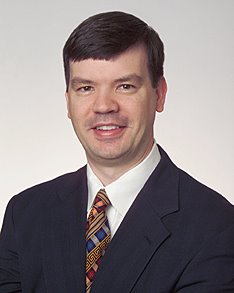
It's easy to take jabs at trial lawyers and the abuse of the tort system in medical-related topics. What's worse is when physicians facilitate outright fraud involved in these cases. In the United States, several radiologists were fingered in recent years committing wide-spread fraud by collaborating with trial lawyers in the interpretation of chest xrays to certify a persons standing in asbestos and silicosis class-action lawsuits. A New York Times profile of West Virginia doctor, Ray Harron.
Some days, Dr. Harron would review more than 100 X-rays a day, he said during his deposition. He charged $125 an evaluation, but would also charge a flat fee -- perhaps $10,000 -- if he had to travel to a faraway screening site, in California or Hawaii, for example. If he had charged $125 per medical report for the 76,224 claims submitted to the Manville trust, Dr. Harron would have made more than $9.5 million from those claims alone.
Most disturbing, though, was another finding by the judge. ''When Dr. Harron first examined 1,807 plaintiffs' X-rays for asbestos litigation,'' Judge Jack wrote, ''he found them all to be consistent only with asbestosis and not with silicosis.'' But after re-examining X-rays of the same 1,807 people ''for silica litigation, Dr. Harron found evidence of silicosis in every case.''
The diagnoses ''were manufactured for money,'' the judge wrote last summer in an opinion that sent some claims back to state courts and imposed sanctions on one of the plaintiff firms. ''The record does not reveal who originally devised this scheme, but it is clear that the lawyers, doctors and screening companies were all willing participants,'' Judge Jack wrote.
Back in the late 80's and early 1990's a number of doctor's made windfalls on the fears of breast implant patients by repeatedly testifying for money in court about the ills of silicone gel implants (which as we know was later found to unsubstantiated).
It seems like the lawyers in other countries were inspired by our example, as has played out in Great Britain.
In an explosive article in The Lancet (Britain's equivalent of the New England Journal of Medicine) back in 1998, an article was published by surgeon, Andrew Wakefield, associating certain vaccines with autism. This article caused the vaccination rate in the U.K. to fall by almost 1/3 and set of a world-wide ripple of lawsuits against vaccine manufacturers. It later was revealed that Dr. Wakefield received more then $50,000 from lawyers supporting this research which he argued was a donation to the hospital and not to him.
It turns out that aside from that sum of money which has been known about for years, recent investigative reporting has discovered he personally was receiving far greater sums directly from plaintiffs lawyers in excess of $500,000 USD with a number of friends and associates also being paid.
ANDREW WAKEFIELD, the former surgeon whose campaign linking the MMR vaccine with autism caused a collapse in immunisation rates, was paid more than £400,000 by lawyers trying to prove that the vaccine was unsafe.
The payments, unearthed by The Sunday Times, were part of £3.4m distributed from the legal aid fund to doctors and scientists who had been recruited to support a now failed lawsuit against vaccine manufacturers.
Critics this weekend voiced amazement at the sums, which they said created a clear conflict of interest and were the “financial engine” behind a worldwide alarm over the triple measles, mumps and rubella shot.
Dr Evan Harris, Liberal Democrat MP for Oxford West and Abingdon remarked “This lawsuit was an industry, and an industry peddling what turned out to be a myth.”
On a positive related note is this recent article in Business Week "How business trounced the trial lawyers"






1 comment:
Great point. Absolutely it still could be true as you can truly never prove a negative.
However, the discrepancy b/w that research and the rest of the relevant literature has made the methods and conclusions in it even more suspect. Throw in undeclared payments from lawyers and it becomes hard to assess this research on it's face value.
Post a Comment